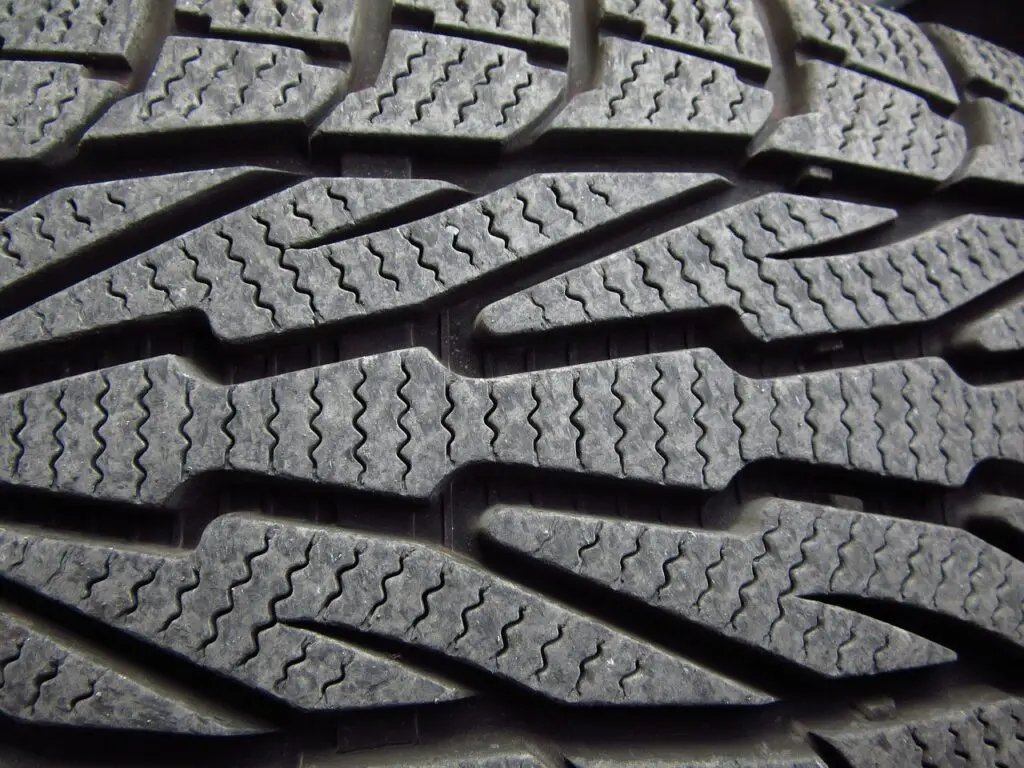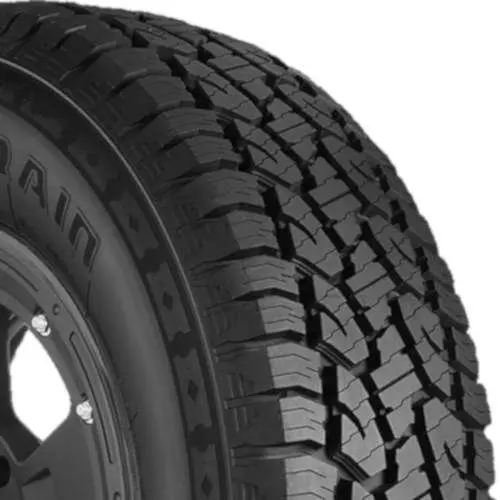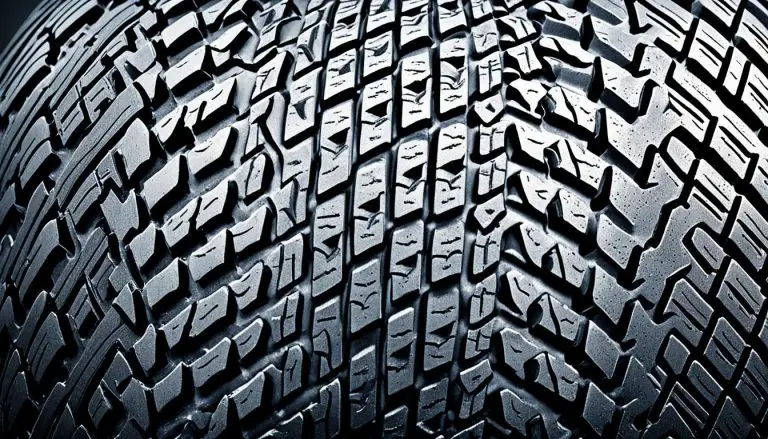
When it comes to tire safety and performance, knowing the tire thickness is crucial. Tire thickness is determined by different factors, including the vehicle type, driving conditions, and performance preferences. By understanding these factors, you can determine the optimal tire thickness for your specific needs.
In this article, we will provide a comprehensive understanding of tire thickness and its importance in determining tire dimensions. We will also delve into the various measurements used to describe tire dimensions, including tire width, sidewall height, and tire depth. Additionally, we will examine how different tire thicknesses affect grip, stability, and fuel efficiency, providing insights on selecting the ideal tire thickness for your vehicle.

So, let’s dive into the world of tire dimensions and explore how thick a tire should be for optimal vehicle performance and safety.
Tire Dimensions and Measurements
When it comes to tire dimensions, there are several key measurements to consider. The first is tire width, which is the distance between the sidewalls of a tire when measured from one sidewall to the other. This measurement is usually expressed in millimeters and is an important factor in determining overall tire size and performance.
Another measurement to consider is tire sidewall height, which is the distance between the rim of the tire and the outer edge of the tread. This measurement is expressed as a ratio of the tire’s width and is also crucial in determining tire size. The higher the sidewall, the more cushioning the tire provides, resulting in a smoother ride.
The concept of tire depth is also important to understand. Tire depth refers to the distance between the outermost part of the tire tread and the bottom of any grooves in the tread. This measurement is vital in determining tire performance and safety, as tires with low tread depth can result in reduced traction and an increased risk of hydroplaning in wet conditions.
Overall, understanding tire dimensions and measurements is crucial in selecting the right tire for your vehicle and ensuring optimal performance and safety on the road.
Factors Influencing Tire Size
When it comes to determining the size of your tires, there are several factors to consider. These include:
| Vehicle Type | Different vehicles require different tire sizes to function optimally. For example, a small sports car would require much different tire dimensions than a heavy-duty truck. |
|---|---|
| Driving Conditions | Weather and road conditions can also play a significant role in determining the ideal tire size. For example, if you frequently drive on wet, slippery roads, you may need a tire with more tread depth to ensure proper traction. |
| Performance Preferences | If you prioritize speed and performance, you may want a tire that is wider and thicker to provide better grip and stability on the road. |
By taking these factors into account, you can determine which tire dimensions will provide the best performance and safety for your specific needs. Keep in mind that tire thickness and dimensions are crucial to maintaining optimal vehicle performance, and choosing the right tire size can make all the difference in your driving experience.

Optimal Tire Thickness for Vehicle Performance
Choosing the ideal tire thickness for your vehicle can significantly impact its performance. The thickness of your tire plays a crucial role in your car’s grip, stability, and fuel efficiency.
Generally, thicker tires provide better grip and stability, especially on wet or slippery roads. However, thicker tires can also reduce fuel efficiency. On the other hand, thinner tires usually have better gas mileage but may not be as suitable for harsh driving conditions.
The optimal tire thickness for your vehicle depends on various factors, including the vehicle type, driving conditions, and personal preferences. It is crucial to take into account these factors when selecting a tire size that maximizes your vehicle’s overall performance.
| Tire Thickness | Pros | Cons |
|---|---|---|
| Thick | Better grip and stability | Reduced fuel efficiency |
| Thin | Better gas mileage | May not be ideal for harsh driving conditions |
When selecting tire dimensions, you must also consider the type of driving you most frequently engage in. For example, if you mainly drive in urban areas, a thinner tire may be more suitable. Conversely, if you live in an area with harsh climates, such as winter or off-road driving, a thicker tire with deeper grooves provides vital traction.
Ultimately, selecting the optimal tire thickness is a balance between grip, stability, and fuel efficiency. By taking into account tire dimensions, driving conditions, and personal preferences, you can make an informed decision on a tire size that maximizes your vehicle’s performance.
Conclusion
When it comes to vehicle performance and safety, understanding how thick a tire should be is crucial. By taking into account the various factors that influence tire size and thickness, one can select the optimal tire for their needs.
It is important to consider the various measurements used to describe tire dimensions, such as tire width, sidewall height, and depth, as they all contribute to overall tire thickness. Additionally, factors such as driving conditions, vehicle type, and performance preferences must be taken into account when selecting a tire with the right thickness.
Choosing the ideal tire thickness can significantly impact vehicle performance, affecting aspects such as grip, stability, and fuel efficiency. By selecting the right tire thickness for your vehicle, you can optimize its performance and ensure a safe driving experience.
So, take the time to understand how tire thickness works and consider all the factors before making a purchase. Doing so can help you find the perfect tire to meet your specific needs and enhance your driving experience.
FAQ
Q: How thick is a tire?
A: The thickness of a tire can vary depending on the type and size of the tire. Generally, the thickness of a tire is measured as the distance from the tread to the inner surface of the tire. It is important to note that tire thickness can also be referred to as tire sidewall height, which is the distance from the rim to the outer edge of the tire.
Q: What are tire dimensions and measurements?
A: Tire dimensions and measurements refer to the various parameters used to describe tires. These include tire width, sidewall height, and tire depth. Tire width is the measurement of the tire’s width from sidewall to sidewall, while sidewall height represents the distance from the rim to the outer edge of the tire. Tire depth indicates the depth of the tire’s grooves, which is important for traction and grip.
Q: What factors influence tire size?
A: Several factors can influence tire size. The type of vehicle, driving conditions, and personal preferences all play a role in determining the optimal tire size. Vehicle type and weight can impact the required load capacity, while driving conditions, such as wet or snowy roads, may necessitate specific tread patterns. Personal preferences, including desired handling characteristics and fuel efficiency, can also influence tire size selection.
Q: How does tire thickness affect vehicle performance?
A: Tire thickness has a direct impact on vehicle performance. Thicker tires can provide improved stability, better grip, and enhanced handling capabilities. They can also offer better protection against punctures and impacts. However, it’s essential to strike a balance between tire thickness and other factors like fuel efficiency and ride comfort. Consulting with a professional or referring to the manufacturer’s recommendations can help determine the optimal tire thickness for your vehicle and intended use.
Q: What is the optimal tire thickness for vehicle performance?
A: The optimal tire thickness for vehicle performance depends on various factors, including vehicle type, driving conditions, and personal preferences. Sports cars and performance vehicles often require thicker tires for enhanced grip and stability during aggressive driving. On the other hand, vehicles used for everyday commuting may prioritize fuel efficiency and ride comfort, which may warrant thinner tires. Considering the specific needs of your vehicle and consulting with a tire expert can help determine the ideal tire thickness for your desired performance.





